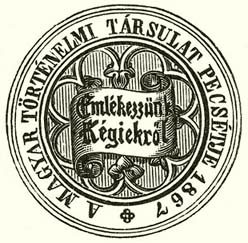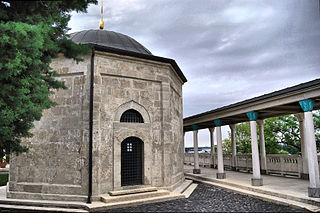 W
WThe Hungarian Academy of Sciences is the most important and prestigious learned society of Hungary. Its seat is at the bank of the Danube in Budapest, between Széchenyi rakpart and Akadémia utca. Its main responsibilities are the cultivation of science, dissemination of scientific findings, supporting research and development and representing Hungarian science domestically and around the world.
 W
WHungarian art stems from the period of the conquest of the Carpathian basin by the people of Árpád in the 9th century. Prince Árpád also organized earlier people settled in the area.
 W
WThe bárányles is a local tradition in the southern Hungarian village Hosszúhetény and around the Zengő mountain, a night pilgrimage on Easter Sunday, in which only males can take part.
 W
WThe Biological Research Centre (BRC) of the Hungarian Academy of Sciences is located in Szeged, Hungary.
 W
WThe gulyás is the traditional mounted cattle-herdsman of Hungary. The gulyás tradition is associated with the Hungarian puszta and with the Hungarian Grey or Hungarian Steppe breed of Podolic cattle, Hungarian: Magyar szürke szarvasmarha, now considered a meat breed but formerly used as oxen. Gulyás is the origin of the word goulash.
 W
WHungarian heraldry generally follows German heraldry in its artistic forms, but has its own distinctive character. It is classified to Central and Eastern European heraldry.
 W
W"Himnusz" is the national anthem of Hungary. The words were written by Ferenc Kölcsey, a nationally renowned poet, in 1823, and its currently official musical setting was composed by the romantic composer Ferenc Erkel in 1844, although other less-known musical versions exist. The poem bore the subtitle "A magyar nép zivataros századaiból" ; it is often argued that this subtitle – by emphasising past rather than contemporary national troubles – was added expressly to enable the poem to pass Habsburg censorship. The full meaning of the poem's text is evident only to those well acquainted with Hungarian history. The first stanza is sung at official ceremonies and as well in common. It was de facto used as hymn of the Kingdom of Hungary from its composition in 1844, and was officially adopted as national anthem of the Third Hungarian Republic in 1989.
 W
WThe Hungarian Historical Society is a learned society in Hungary, established in 1867. Its main responsibilities are the cultivation of the History of Hungary, dissemination of scientific findings, supporting research and development and representing the history of Hungary domestically and around the world.
 W
WJapanese woman is an 1871 painting by Hungarian artist Bertalan Székely.
 W
WHungaria is a national personification of Hungary, an allegory and a personification of the nation.
 W
WThe Matthias Corvinus House is one of the oldest buildings in Cluj-Napoca, Transylvania, Romania. It was built in the 15th century, in the gothic style, as a small guesthouse. During its history, the house served as a jail, hospital, and museum; it is now home to a visual arts institute.
 W
WThe National Archives of Hungary were created in 1756. They were first located in Pressburg. In 1784, they were transferred to Buda.
 W
WThe national symbols of Hungary are flags, icons or cultural expressions that are emblematic, representative or otherwise characteristic of Hungary or Hungarian culture. The highly valued special Hungarian products and symbols are called Hungaricum.
 W
W"Pole and Hungarian brothers be" and "Pole and Hungarian, two good friends" are English translations of a popular saying about the traditional kinship, brotherhood, and camaraderie between Poles and Hungarians.
 W
WThe shepherd's axe is a long thin light axe of Eurasian origin used in past centuries by shepherds in the Carpathian Mountains and in other territories which comprise today Slovakia, Czech Republic, Poland, Ukraine, Romania and Hungary. The features of a shepherd's axe combine a tool with a walking stick, that could be used as a light weapon. It has symbolic historical and cultural connotations and is still used as a prop in many traditional dances, for example the odzemok.
 W
WThe Székely Freedom Day is a day celebrated by the Székely (Hungarian) minority of Romania. It is celebrated every 10 March in Târgu Mureș, but also in other parts of Székely Land and internationally. The holiday was created according to a decision of the Szekler National Council on 6 January 2012.
 W
WThe "Szózat" is a Hungarian patriotic song. It is considered as a second national anthem of Hungary, beside the Himnusz. Usually only its first two stanzas are sung at national celebrations. The official anthem is sung at the beginning of ceremonies, and Szózat is sung at the end.
 W
WGül Baba's tomb (türbe) in Budapest, Hungary, is the northernmost Islamic pilgrimage site in the world. The mausoleum is located in the district of Rózsadomb on Mecset (mosque) Street, a short but steep walk from Margaret Bridge.
 W
WÚj Szó is a Hungarian-language only daily newspaper published in Bratislava, Slovakia. It also publishes a weekly Sunday supplement titled Vasárnap.
 W
WThe Vizsoly Bible, also called Károli Bible was the first Bible printed in the Hungarian language. It was translated in the 16th century by pastor Gáspár Károli and fellow Calvinists and was printed in 1590 by Bálint Mantskovit. A copy is kept on permanent display in the Hungarian village of Vizsoly.
 W
WA vőfély is the Master of Ceremonies before, during and after a traditional wedding in Hungary. He wears a ribboned hat so he can be easily identified.